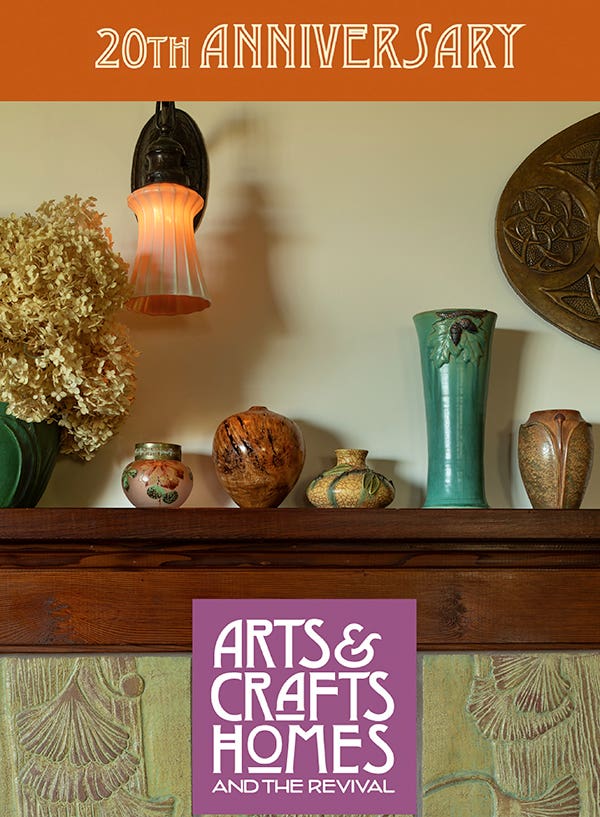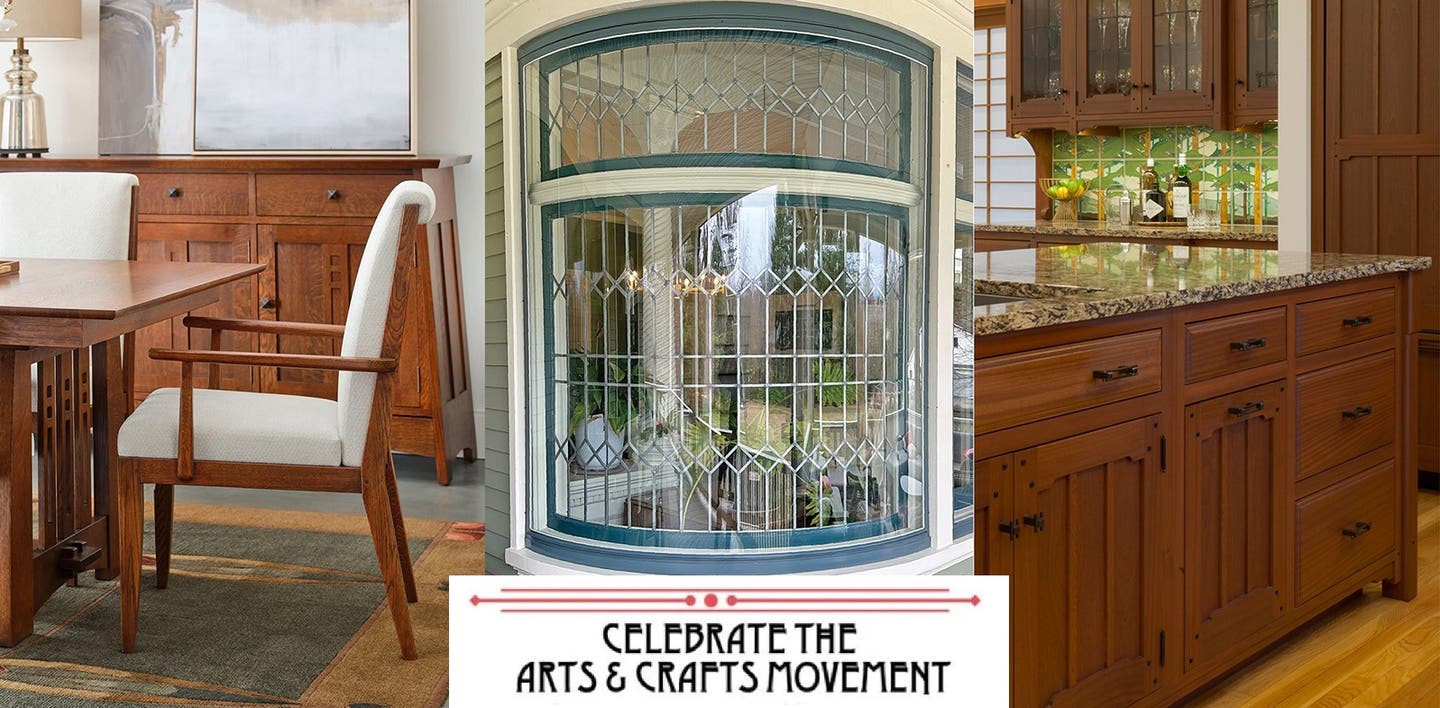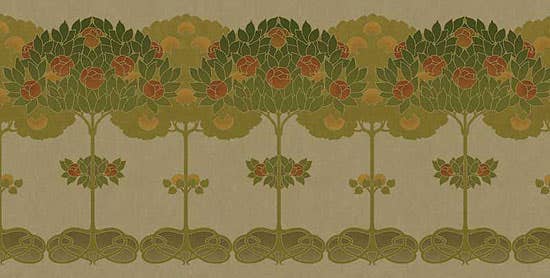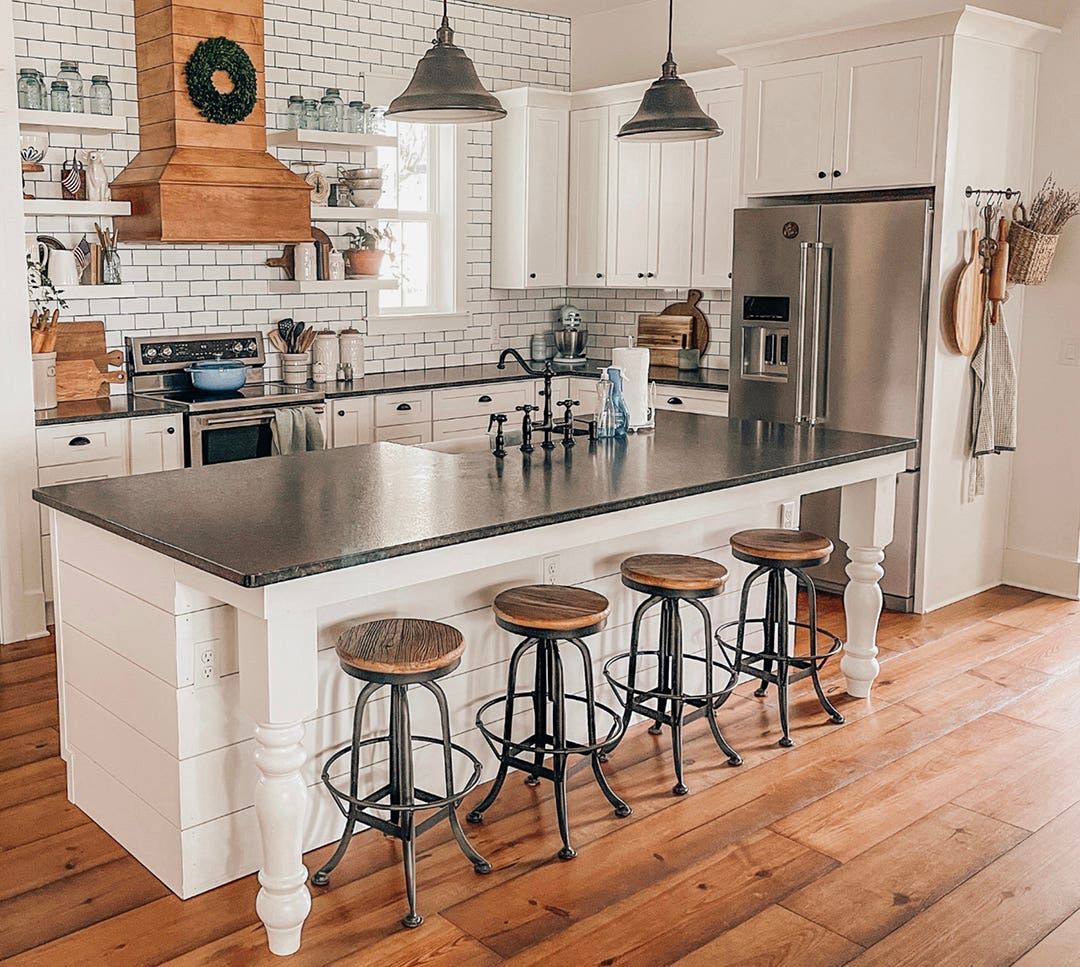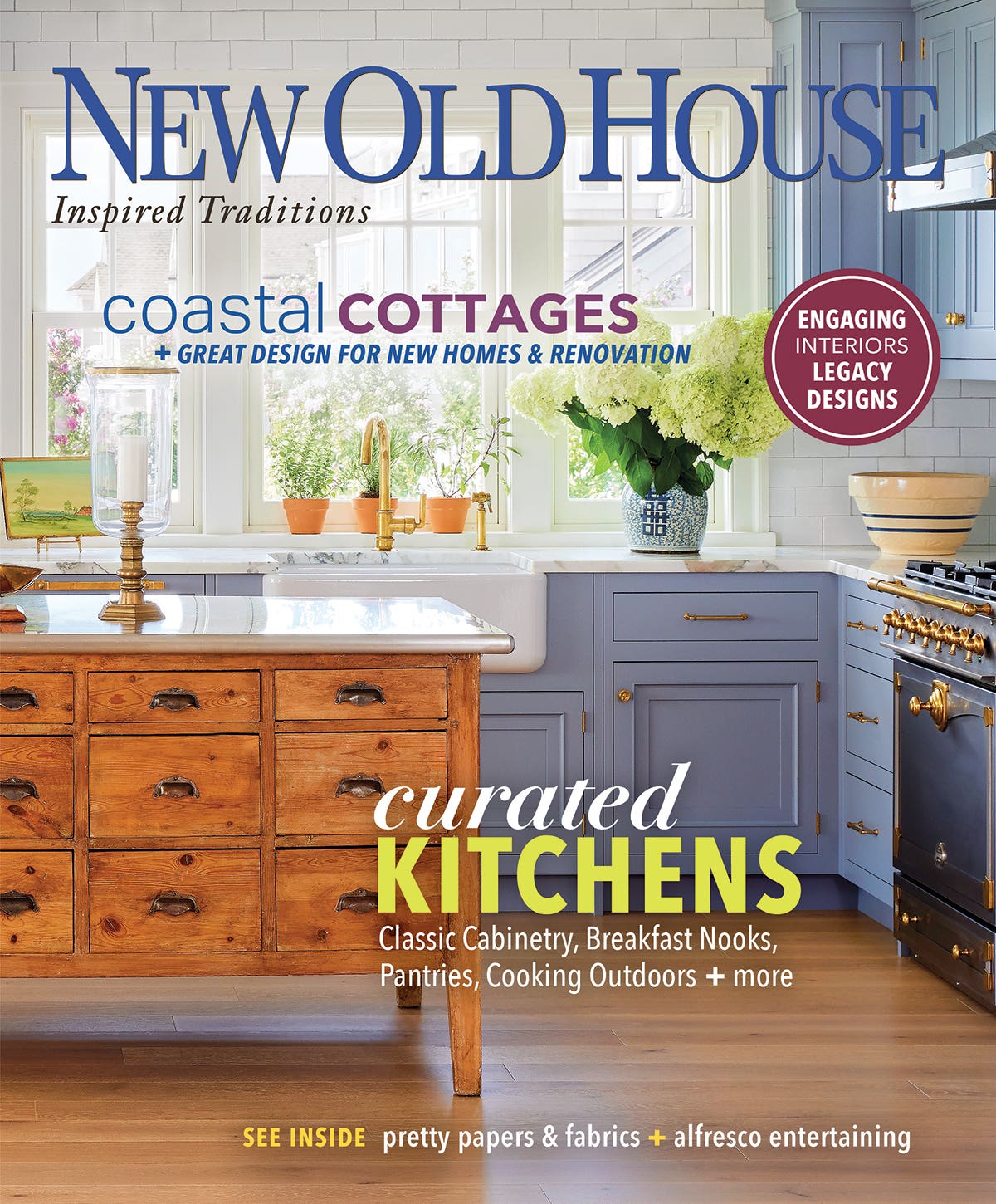The Guild: William Morris Studio
The artist, once a machinist, works in several media—brass, wood, mica, and leaves, along with pottery and glass bases—to make stunning art lamps. Ironically, the glass artist’s inspiration does not…
The artist, once a machinist, works in several media—brass, wood, mica, and leaves, along with pottery and glass bases—to make stunning art lamps.
Ironically, the glass artist’s inspiration does not involve the father of the Arts & Crafts movement, his 19th-century English namesake. “Years ago, I associated the name with the talent agency,” Morris laughs.
William Morris explains that his original craft was that of a machinist: he executed all manner of ship repairs on the San Francisco waterfront. He graduated to machine shops and the exacting tolerances of prototype work. Today, however, Morris makes artful table lamps composed of pottery vessels, mahogany bases and caps, mica shades, and solid brass fittings. He describes the journey from machining to lamp designing and building as a natural progression, his creative drive expressing itself in more and more specific terms.
“It has been an interesting process,” Morris muses. “I do keep getting better at it.”
While he was still working at a Bay Area machine shop, he started collaborating with a fellow machinist who was also a furniture maker. After he learned cabinetmaking, he struck out on his own, inspired by a mentor who made Greene and Greene lighting reproductions. Those compositions of wood and stained glass sparked Morris’s determination to create beautiful Arts & Crafts lamps, which he began to make with his wife 20 years ago. Today he prides himself on being a one-man business entirely driven by individual orders from clients who find him via his website.
“Each piece is made to order, and I carefully source all the materials,” Morris explains. “You know, it doesn’t have to be solid brass under the shade—many people don’t care about the fittings. But I do. The work is either right or it’s not, and you do it until it’s right.”
Morris is constantly refining and adjusting as he partners with various glass and pottery makers. While he made floor lamps for most of the past two decades, now he focuses solely on desk and table lamps.
“Everything has its time…when the energy is not right, the result is no good,” Morris says. “I do this work to bring love and beauty into everyday life.”
Mastering Media
“Different elements, different media: weaving them together is more satisfying,” says the man who cut his teeth, so to speak, on steel and other hard media. From those early machining days, William Morris has come to appreciate the special skill set needed for each different craft that goes into his lamps. Ephraim Faience Pottery of Wisconsin makes some of his lamp bases, but he jealously guards his other sources. “My suppliers are really, really important to me. I don’t want my competitors to know who they are,” he says.
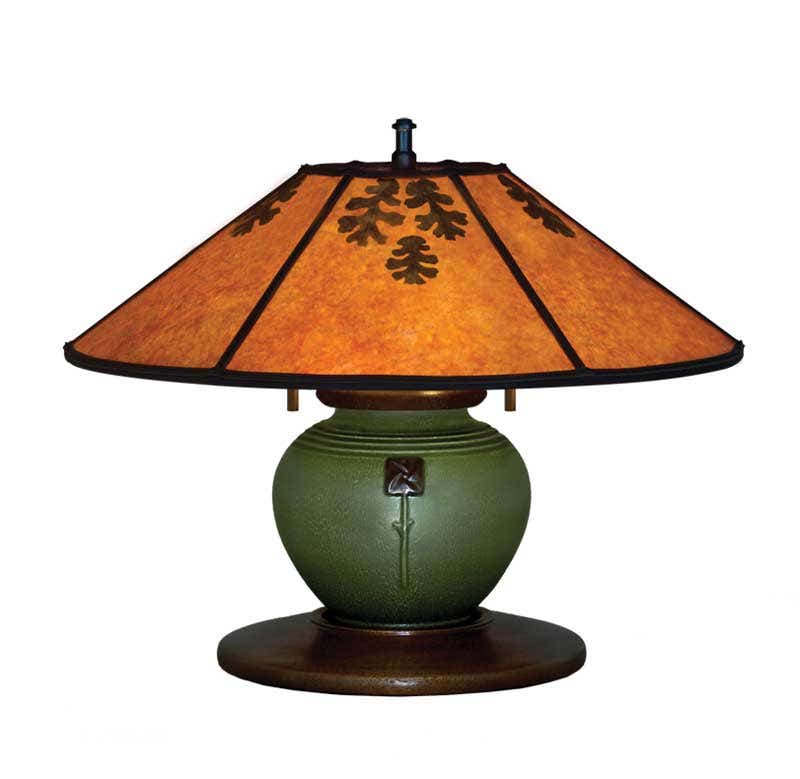

Morris turns and finishes the wood parts, assembles the lamps, and makes the mica shades—a task formerly executed by his wife, Renee. “I do all of the work myself except for the pottery. Working with mica [mineral] can be like peeling an onion; you have to develop a feel for it. The material almost has a specific smell. It takes time to figure it out.” The color of mica ranges from almond to amber to deep orange.
Morris presses natural leaves—oak, bamboo, Japanese maple, eucalyptus, ginkgo—onto the mica. Clients choose the leaf, the mica color, and the shape.
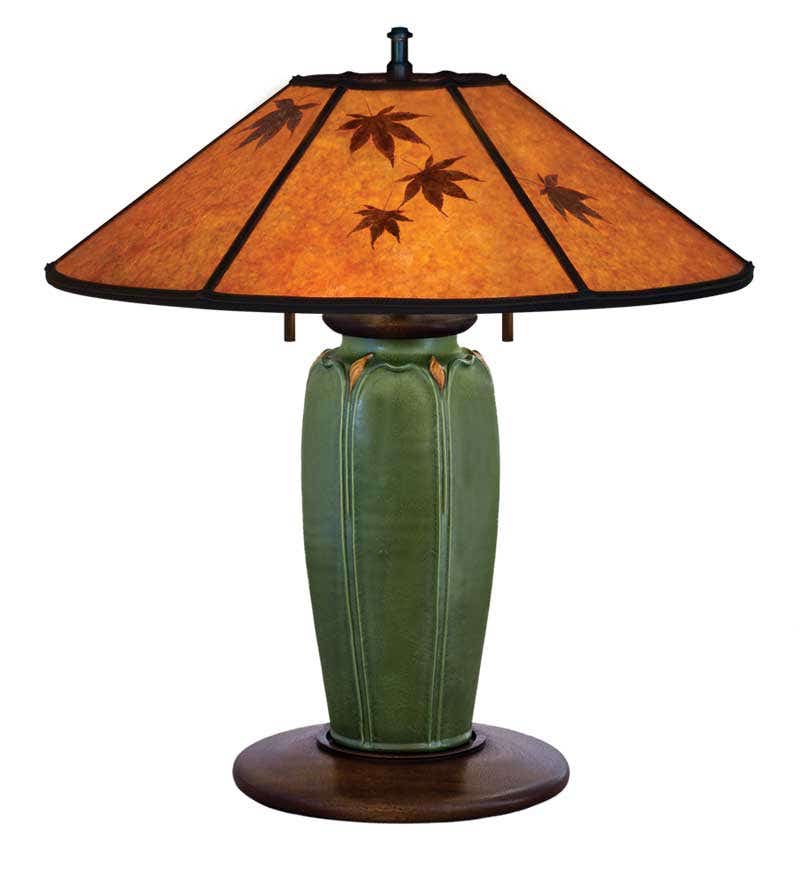
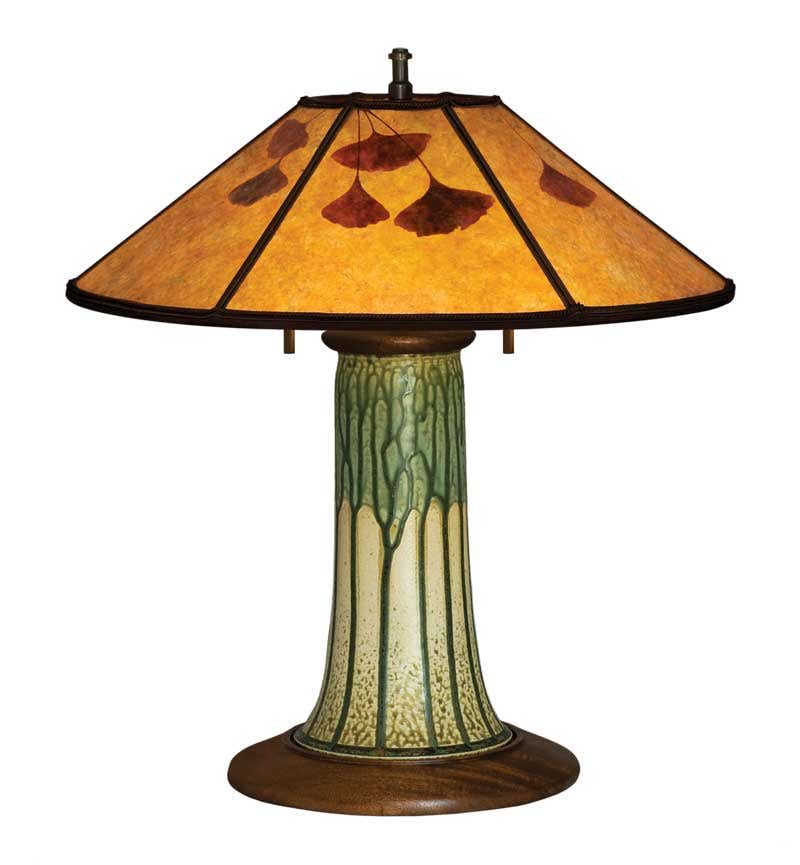
Slow Hand
Yes, William Morris’ newest design series, called ‘Clapton’, was directly inspired by and named for the British rock and blues guitarist and singer–songwriter Eric Clapton. Morris Studio’s “Clapton OG” refers to the organic green glaze used on the pottery base.
“Clapton is a remarkable artist,” Morris says. He dates his admiration to Clapton’s “Concert for George,” organized to honor the late Beatle George Harrison. The concert featured Harrison’s, not Clapton’s, music, but still there’s no question: In a white room (or any other space), after midnight or in the sunshine of your love, a William Morris table lamp makes you look wonderful tonight.
William Morris
The William Morris Studio
Benicia, CA
(707) 745-3907
williammorrisstudio.com
Regina Cole is an author and freelance writer for national and regional magazines on all aspects of architecture, interior design, landscape design, and yacht design. Cole specializes in historic architecture and period interiors.
Her work has appeared in a large number of publications, including the daily and Sunday Boston Globe, Interior Design, Old House Journal, Ocean Home, New Old House, Traditional Building, New England Home, Design New England, Maine Boats, Homes and Harbors, Forbes.com, and others.
She has been honored with a number of national writing prizes, including the Association for Garden Communicators Silver Award for a Magazine Article, the National Association of Real Estate Editors Silver Award for Best Residential Real Estate Story in a Daily Newspaper, and the National Association of Real Estate Editors Gold Award for the Best Architecture Story.


